Phone Comparisons: Samsung Galaxy S25+ Vs Samsung Galaxy S24+
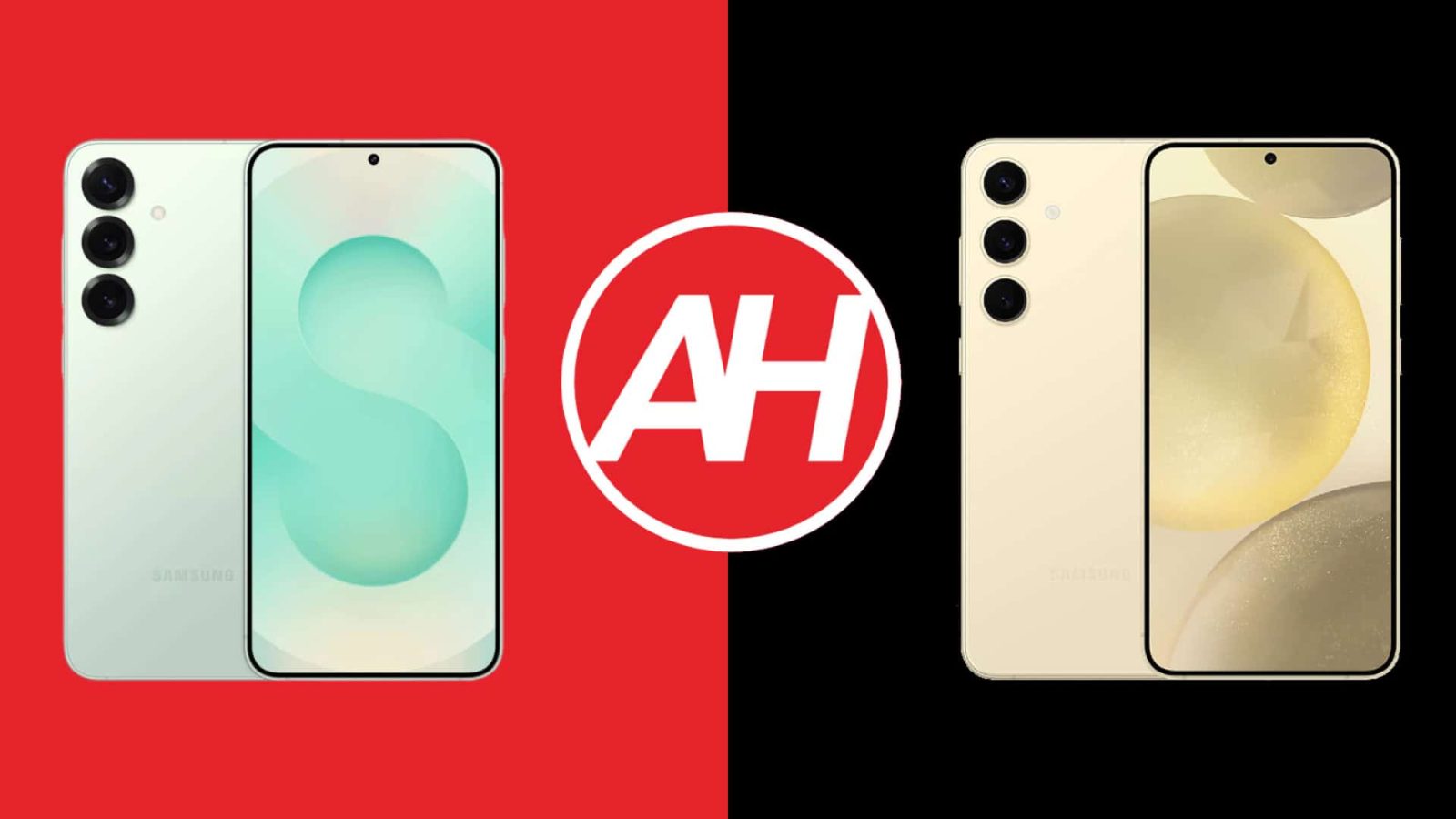
Contents
Samsung announced a new ‘Plus’ smartphone in January, as part of its Galaxy S25 series. In this article, we’ll be comparing the Samsung Galaxy S25+ vs Samsung Galaxy S24+. The current-gen ‘Plus’ Galaxy S25 model goes against its predecessor. Considering how very little has changed from last year, this should be a rather interesting comparison, though not for the usual reasons.
As we usually do, we will first list the specifications of both smartphones. Following that, we’ll compare them across a number of other categories. Those categories include design, display, performance, battery, cameras, and audio. This article will hopefully help you make a decision whether the Galaxy S25+ is worth getting or not. Let’s get started.
Specs
Samsung Galaxy S25+ vs Apple iPhone 16 Plus, respectively
– Screen size:
6.7-inch Dynamic AMOLED 2X (flat, 120Hz, 2,600 nits max brightness)
6.7-inch Dynamic AMOLED 2X (flat, 120Hz, 2,600 nits max brightness)
– Display resolution:
3120 x 1440
3120 x 1440
– SoC:
Qualcomm Snapdragon 8 Gen Elite for Galaxy
Qualcomm Snapdragon 8 Gen 3 for Galaxy / Samsung Exynos 2400
– RAM:
12GB (LPDDR5X)
12GB (LPDDR5X)
– Storage:
256GB/512GB (UFS 4.0)
256GB/512GB (UFS 4.0)
– Rear cameras:
50MP (wide, f/1.8 aperture, 1/1.56-inch sensor, OIS, Dual Pixel PDAF), 12MP (ultrawide, 120-degree FoV, f/2.2 aperture, 1/2.55-inch sensor, 1.4um pixel size), 10MP (telephoto, f/2.4 aperture, OIS, PDAF, 1/3.94-inch sensor, 3x optical zoom)
50MP (wide, f/1.8 aperture, 1/1.56-inch sensor, OIS, Dual Pixel PDAF), 12MP (ultrawide, 120-degree FoV, f/2.2 aperture, 1/2.55-inch sensor, 1.4um pixel size), 10MP (telephoto, f/2.4 aperture, OIS, PDAF, 1/3.94-inch sensor, 3x optical zoom)
– Front cameras:
12MP (wide, f/2.2 aperture, Dual Pixel PDAF, 1/3.2-inch sensor size, 22mm lens)
12MP (wide, f/2.2 aperture, Dual Pixel PDAF, 1/3.2-inch sensor size, 22mm lens)
– Battery:
4,900mAh
4,900mAh
– Charging:
45W wired, 15W wireless (Qi2 Ready), 4.5W reverse wireless (charger not included)
45W wired, 15W wireless, 4.5W reverse wireless (charger not included)
– Dimensions:
158.4 x 75.8 x 7.3 mm
158.5 x 75.9 x 7.7mm
– Weight:
190 grams
196/197 grams
– Connectivity:
5G, LTE, NFC, Wi-Fi, USB Type-C, Bluetooth 5.4/5.3
– Security:
In-display fingerprint scanner (ultrasonic) & facial scanning
In-display fingerprint scanner (ultrasonic) & facial scanning
– OS:
Android 15 with One UI 7
Android 14 with One UI 6.1
– Price:
$999.99+
$999+
– Buy:
Samsung Galaxy S25+ (Samsung.com)
Galaxy S24 series (Samsung)
These two smartphones have very similar designs. They have the exact same shape, and if not for the slightly different look of their rear camera setups, it would be virtually impossible to figure out which is which. They both have the same curvature on their corners, while they both also include flat displays with a centered display camera hole up top. The bezel thickness is also very similar. So you basically cannot tell them apart from the front.
On the back, they both have three cameras, and each of those cameras is its own tiny camera island. The cameras are vertically aligned in the top-left corner, and they do protrude. The Galaxy S25+ does have a bit larger camera islands, even though the camera hardware is exactly the same. The LED flash is also in the same spot, while the backplate on both phones is flat.
They also have flat sides, which are slightly rounded towards the edges. Both phones feature physical buttons on the right-hand side, and even their positioning is the same. The difference in height and width is 0.1mm, so you basically cannot see it. The Galaxy S25+ is 0.4mm thinner than its predecessor, and 6 grams lighter. Both phones come with an IP68 certification for water and dust resistance, and both are very slippery. They are made out of aluminum and glass after all.
Yes, there are some minor differences, but for all intents and purposes you’re getting the same design here. Samsung opted not to change much, so that, on its own, is not really a reason to upgrade.
Samsung Galaxy S25+ vs Samsung Galaxy S24+: Display
The Samsung Galaxy S25+ features a 6.7-inch 3120 x 1440 Dynamic LTPO AMOLED 2X display. That panel is flat, and it supports an adaptive refresh rate from 1 to 120Hz. HDR10+ content is also supported here, while the display goes up to 2,600 nits of peak brightness. The screen-to-body ratio is at around 92%, while the display aspect ratio is 19.5:9. The Gorilla Glass Victus 2 from Corning protects this phone’s display.

The Galaxy S24+, on the other hand, has basically the same display. It’s the same size, resolution, refresh rate, and it even has the same peak brightness. It truly seems like Samsung stuck with the same display, and a side-by-side comparison kind of confirms it. Even the display protection is the same. The bezels are 0.2% thinner on the Galaxy S25+, but that’s not really something you’ll notice. They’re uniform on both smartphones.
So, yes, in use, these two displays are exactly the same. They are vibrant, sharp, and have good viewing angles. They also offer good touch response and are a joy to use overall. You do have some additional display settings in the software itself. Neither display offers a high frequency PWM dimming, though. That’s not something that many of you will complain about, unless you’re reactive to it, of course. Still, many companies go out of their way to include it, for a good reason, so it’s a shame Samsung didn’t.
Samsung Galaxy S25+ vs Samsung Galaxy S24+: Performance
The Samsung Galaxy S25+ is fueled by the Snapdragon 8 Elite for Galaxy, Qualcomm’s latest 3nm processor. This is just an overclocked version of the Snapdragon 8 Elite. Samsung also included 12GB of LPDDR5X RAM inside of this phone, and also UFS 4.0 flash storage. The Galaxy S24+ has the same exact RAM and storage, but an inferior Snapdragon 8 Gen 3 or Exynos 2400 chips. Both of those are 4nm processors.
Do note that we’ve used the Snapdragon 8 Gen 3 variant of the Galaxy S24+, not the Exynos 2500 model, so we cannot really comment on that one. Samsung opted to go with a single chip this year, rather that differentiating processors based on regions. That was the right move, though the Exynos 2500 yield issues are probably the reason why. Either way, it’s good to see that a single SoC is used now.
The performance of both smartphones is actually great. The Galaxy S24+ is still extremely snappy, and while the Galaxy S25+ may have an edge in some ways, by being a split second faster, that’s not something you’ll notice in day-to-day use unless you’re using them side by side. They’re both great for general use, including heavy multitasking, image editing, and so on. You can even play demanding games on both phones with ease, that’s not an issue. The Galaxy S25+ does stay a bit cooler thanks to a larger vapor chamber, though. The heat is not really an issue on either phone, though.
Samsung Galaxy S25+ vs Samsung Galaxy S24+: Battery
You’ll find the same battery pack inside both of these smartphones. Samsung used a 4,900mAh unit inside the Galaxy S24+, and then opted to do the same in its successor. It’s a regular Li-Ion battery, by the way. That battery pack may not seem big compared to today’s standards in phones with 6.7-inch displays, but it has been serving the Galaxy S24+ really well, and based on our usage of the Galaxy S25+, it won’t really be a problem this year either. Well, at least it’s not at the moment.
In fact, both of these phones are really great in terms of battery life. Yes, the Galaxy S25+ did a better job, but both are full-day devices even for power users. Heavy gaming can mess things up, but other than that, these two devices can easily go above the 7-hour screen-on-mark when you need them to. At least they were able to do that for us. The Galaxy S25+ did have more juice left at the end of the day, though, constantly.
When it comes to charging, both of them support 45W wired, 15W wireless (Qi2 Ready), and 4.5W reverse wireless charging. The charging is not slow, but it’s not as far as a number of their competitors offer. Also, do note that a charger is not included in the retail box with either of these two smartphones.
Samsung Galaxy S25+ vs Samsung Galaxy S24+: Cameras
These two smartphones have the exact same camera setups. The hardware is completely identical. Both phones include a 50-megapixel main camera (1/1.56-inch sensor size), along with a 12-megapixel ultrawide unit (120-degree FoV, 1/2.55-inch sensor size), and a 10-megapixel telephoto camera (1/3.94-inch sensor size, 3x optical zoom). Every other parameter is the same too, including the lenses.

The image quality is not exactly much better this time around, in fact, the output is very similar from the two phones. Generally, the images do look good, but they cannot compete with the best camera smartphones out there. The colors are mostly good, with an oversaturation here and there. The same goes for white balance. The images do not end up looking all that sharp compared to other high-end smartphones, though. They’re a bit softer. That is even more noticeable if you shoot indoors. The sharpening has been toned down at least, a little bit.
Images from the telephoto camera are okay, but not as good as the ones from the main shooter. The quality is lower. The same goes for the ultrawide camera, though it’s better than the telephoto unit. It’s basically what we’ve seen last year. Low-light images do end up looking good if you’re shooting with the main camera, though the shadows could be a bit brighter in all honesty. All in all, it doesn’t do a bad job. There’s enough detail, and images are usually well-balanced.
Audio
The speakers seem to be the same too. The loudness is basically the same, and the sound quality seems to be too. The speakers are more than loud enough, and the general output quality is not bad either.
What you will not find on either phone is an audio jack. That’s something we’re used to when it comes to flagships these days, though. You can still use their Type-C ports to connect your wired headphones, though.
What’s your reaction?
Love0
Sad0
Happy0
Sleepy0
Angry0
Dead0
Wink0

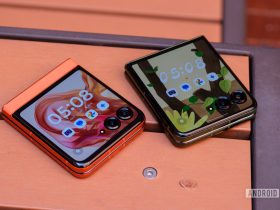
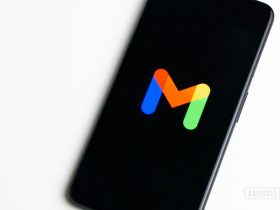
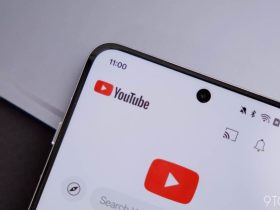

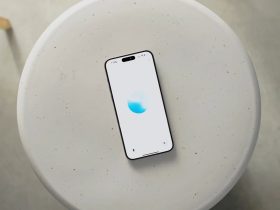
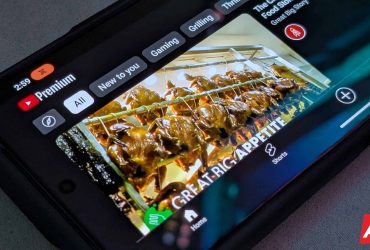
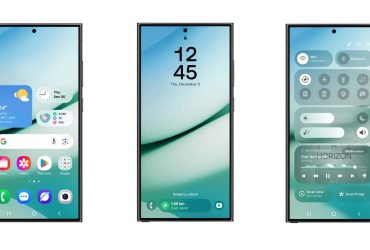


Leave a Reply
View Comments